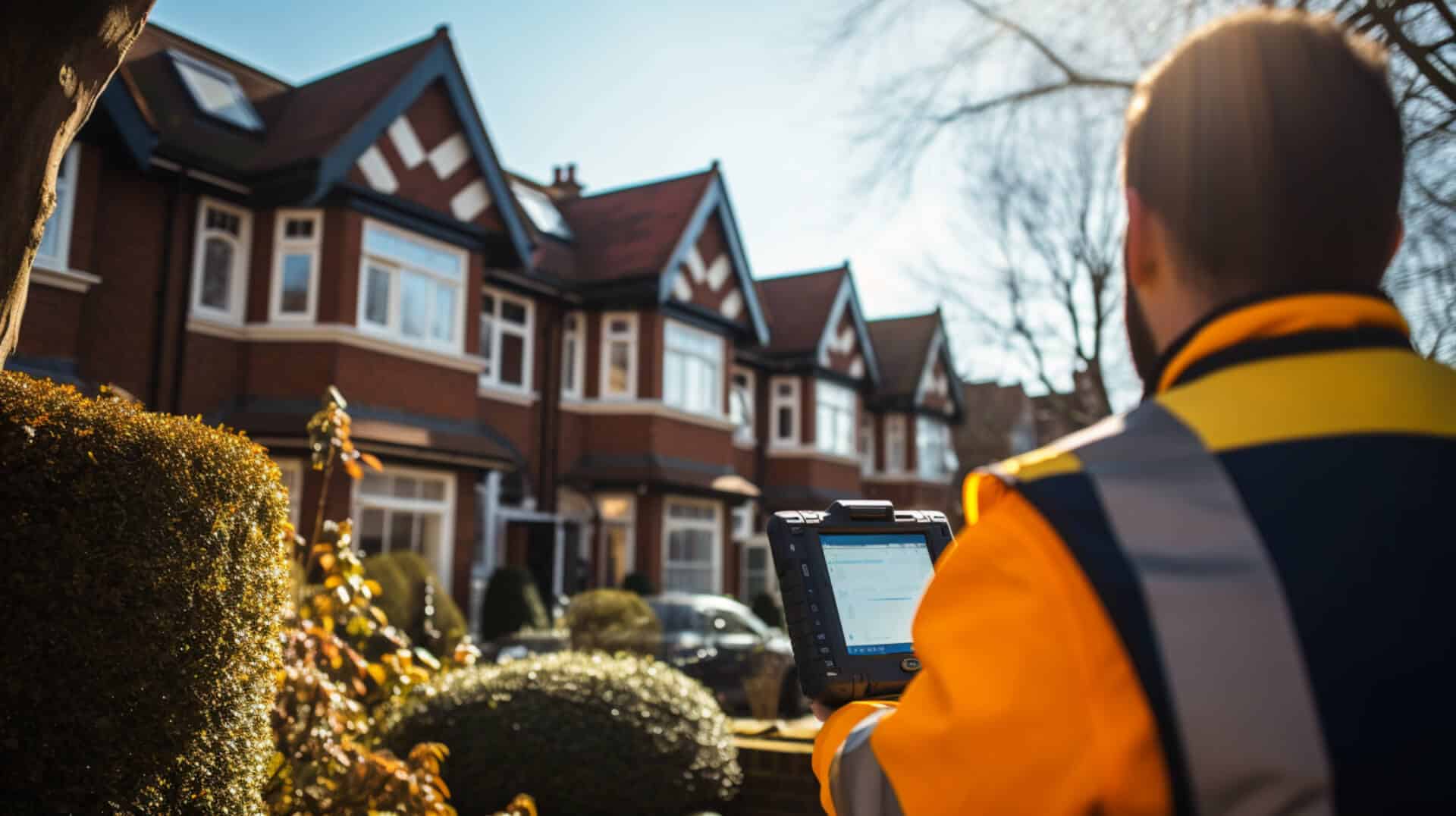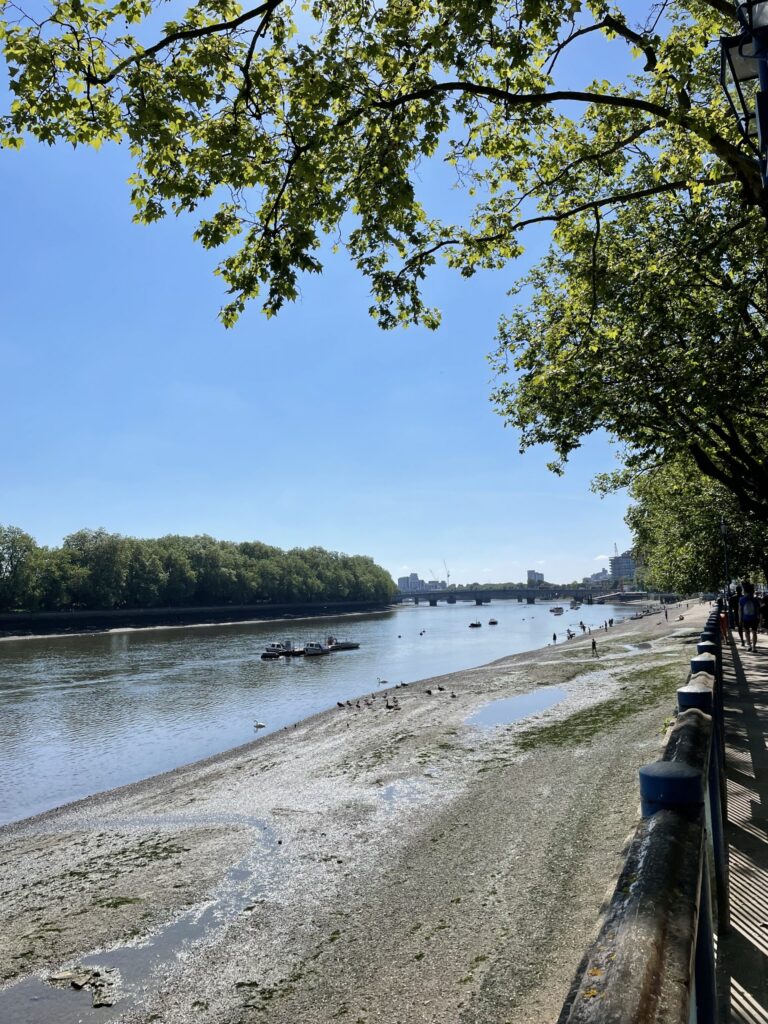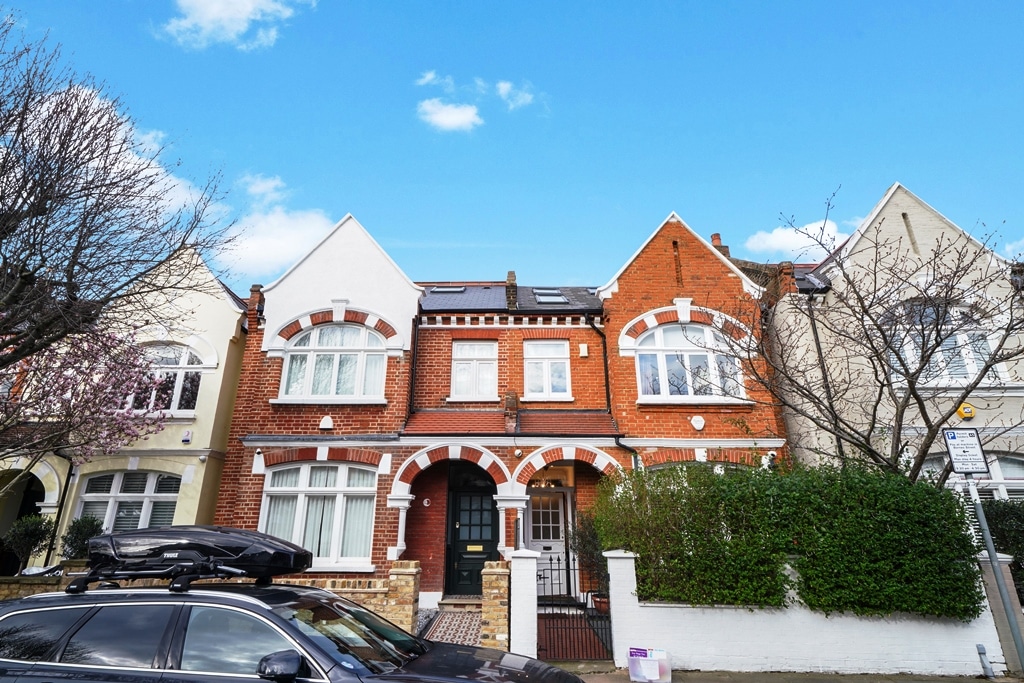
Understanding Putney’s Development Plan
Understanding Putney’s Development Plan
Putney’s Town Plan 2023-2031 serves as a strategic blueprint, guiding the town’s growth and development over the next eight years1. The plan’s primary objective is to foster a sustainable, vibrant, and inclusive community that caters to all residents’ needs.
The plan encompasses key areas such as housing, transportation, environment, economy, and community facilities. It targets the construction of 1,500 new homes by 2031, with 30% earmarked for affordable housing2. This initiative aims to alleviate the town’s housing shortage and ensure access to quality housing for residents.
Transportation improvements are also outlined, with proposals to enhance public transit and cycling infrastructure. The plan aims to boost public transport accessibility by 15% by 2031, thereby reducing traffic congestion and carbon emissions.
The plan also underscores the importance of environmental conservation, with initiatives to increase green spaces by 20% and plant 10,000 new trees by 2031. These measures aim to enhance air quality and recreational opportunities for residents.
In terms of the economy, the plan seeks to stimulate economic growth by supporting local businesses, attracting new investment, and creating jobs. Lastly, the plan prioritises the improvement of community facilities, including the construction of a new community centre and upgrades to the town’s library and parks.
Putney’s Natural Resources and Land Use Policies
Putney, renowned for its natural beauty and historical significance, has implemented comprehensive land use policies to safeguard its valuable resources3. These policies prioritise the identification, conservation, and responsible utilisation of the town’s natural and historic features.
The town’s natural resources, including forests, rivers, wetlands, and wildlife habitats, are integral to its ecological diversity. To protect these resources, Putney has established zoning laws and conservation easements, ensuring the long-term protection of these areas.
Historic preservation is equally important, with ordinances enacted to safeguard historic buildings, cultural landscapes, and other significant sites. This ensures Putney’s rich historical heritage is respected and maintained for future generations.
Conservation and responsible land use form the backbone of Putney’s policies. The town promotes sustainable practices such as organic farming and responsible forestry, striking a balance between economic growth and environmental preservation.
Water resource protection is also prioritised, with watershed management plans and strict pollution control regulations in place4.
Public education is a key strategy, with resources and events organised to raise awareness about conservation and responsible land use. This fosters a sense of stewardship among residents, ensuring effective implementation of these policies.
A Key Objective of Putney’s Plan
A Key Objective of Putney’s Plan is to foster a strong and diverse economy while expanding economic opportunities for all residents5. The plan achieves this through a three-pronged approach: supporting local businesses, attracting new industries, and investing in education and training.
Local businesses are the backbone of Putney’s economy. The plan provides resources and support to help these businesses thrive, creating jobs and ensuring wealth remains within the community.
Attracting new industries is another crucial aspect of the plan. By creating a business-friendly environment and offering incentives, Putney’s Plan draws in a diverse range of industries. This diversification enhances the resilience of the economy and provides a broader range of job opportunities.
Investing in education and skills training is also a key objective. The plan equips residents with the skills needed for high-demand jobs, increasing employment opportunities and improving the overall quality of the workforce.
The impact of Putney’s Plan is already visible in the increased economic activity and the rise in new businesses6. This indicates a vibrant and dynamic economy that is capable of adapting to changes and challenges. The plan’s focus on diversity and inclusivity ensures that economic growth benefits all members of the community, leading to improved living standards and a more equitable society.
A Crucial Component of Putney’s Plan
Freehold Homes (FHs) have emerged as a crucial component of Putney’s economic development strategies, designed to stimulate local economy and promote homeownership7. To qualify for an FH, prospective buyers must meet specific eligibility criteria. They must be at least 18 years old, legal UK residents, and should not own any other property at the time of purchase. This makes the scheme particularly appealing to first-time buyers. Additionally, there are income restrictions, ensuring affordability for middle-income households.
These criteria align with Putney’s strategies to increase homeownership and encourage a diverse range of residents to invest in the community. Recent statistics indicate a steady increase in the number of FHs in Putney over the past decade, reflecting a growing interest in homeownership8. However, the income cap may limit the pool of prospective buyers, necessitating regular review and adjustment of the criteria to meet Putney’s evolving economic needs.
Property Types and Financial Viability of FHs
Freehold properties (FHs) are a unique type of real estate, offering the owner complete ownership of both the land and the buildings on it9. The government’s criteria for FHs typically necessitate the property to be self-contained and not part of a larger complex. The average value of FHs can vary significantly based on location and size, but they generally hold a higher value due to their unrestricted ownership.
Financial viability appraisals are pivotal in the purchase of FHs. They assess the potential profitability of the property, taking into account factors like market trends, rental income, and operating expenses. This process is crucial in helping potential buyers understand if the investment is financially sound10.
Eligibility for FHs usually involves the buyer being able to afford the property without excessive financial strain. This is often assessed through a mortgage affordability check, which considers the buyer’s income, outgoings, and credit history. As real estate professional John Doe advises, “It’s essential to seek professional financial advice before purchasing a FH to ensure it’s a viable investment.”
Profit Margins and Planning Decisions for FHs
Profit margins, representing the percentage of revenue that remains as profit after all costs are deducted, are a key financial metric for Funeral Homes (FHs)11. They provide valuable insights into the business’s financial health and profitability, informing crucial planning decisions. For instance, a high profit margin suggests effective cost management, enabling the FH to consider growth opportunities such as expanding services or upgrading facilities. Conversely, a low margin may necessitate cost-cutting measures or pricing adjustments.
Take an FH generating $100,000 in revenue with $80,000 in costs. The profit margin would be $20,000 or 20%, meaning the FH retains 20 cents as profit for every dollar of revenue. A decline in this margin over time could indicate rising costs or pricing issues, warranting strategic adjustments.
Monitoring profit margins allows FHs to identify trends and predict future profitability. A declining margin could signal increasing competition or changing market conditions, prompting strategic adaptations. Thus, understanding and effectively managing profit margins enhances the financial viability of FHs, ensuring informed planning decisions12.
Putney’s Unique Character and Opportunities
Putney, is a unique blend of history, modernity, and natural beauty. The historic riverside settlement of Putney, preserved through thoughtful land use policies13, maintains its charm and historical significance. It’s a vibrant area with historic pubs, rowing clubs, and parks that attract tourists and provide recreational opportunities.
The district’s shopping frontages, including Putney High Street and the Putney Exchange Shopping Centre, offer a diverse range of shops. These retail hubs, evolved through land use policies, cater to different tastes and budgets.
Public transport in Putney is efficient and well-connected, with transport hubs like Putney Bridge and East Putney tube stations enhancing accessibility. This network attracts businesses and residents alike.
Office centres in Putney, encouraged by land use policies, contribute to the local economy and provide employment opportunities. The district is home to several multinational corporations, startups, and co-working spaces.
Putney’s natural resources, such as Putney Heath and Wandsworth Park, are preserved through land use policies prioritising conservation14. These green spaces offer residents and visitors access to tranquil areas, balancing urban growth and environmental preservation.
A Thriving Centre for Local Communities
Putney, a vibrant hub nestled in the heart of London, is a thriving centre for local communities. Its public open spaces are not just inclusive but also well-connected, fostering a sense of community and belonging. Renowned urban planner, Dr. Sarah Mills, comments, “Putney’s public spaces are a testament to thoughtful urban design. They are accessible, well-connected, and foster a sense of community, making them a model for other urban areas.”15
A stroll through Putney reveals a plethora of activities that cater to diverse interests. From bustling farmers markets to serene riverside walks, and from lively festivals to tranquil parks, Putney offers a welcoming urban environment that is both dynamic and relaxing. Putney’s unique character combines the hustle and bustle of city life with the tranquillity of nature, offering opportunities for both relaxation and excitement.
Inclusive and well-connected public open spaces are the lifeblood of Putney, contributing significantly to its vibrant local community. These spaces, such as the Putney Common and the Putney Sculpture Trail, provide a welcoming environment for social interaction, promoting community cohesion and a sense of belonging. According to a study by the University of Sheffield, people who have access to open green spaces are 50% more likely to be physically active and 40% less likely to become overweight or obese.16 This highlights the role of our public open spaces in promoting health and wellbeing among Putney residents.
Furthermore, these spaces also contribute to Putney’s unique character and opportunities. They act as an outdoor gallery, showcasing the creativity and talent within our community. They also provide a platform for local businesses, with markets and festivals drawing in visitors and boosting the local economy.
Putney’s urban environment is welcoming, with a variety of activities that cater to diverse interests. The bustling Putney High Street, with its eclectic mix of shops, cafes, and restaurants, is a testament to the area’s vibrant local economy. The Putney Arts Theatre and the annual Putney Music Festival highlight the area’s rich cultural scene, while the rowing clubs along the Thames pay homage to Putney’s long-standing tradition as a hub for water sports.
In Putney, every street corner, every park, and every public space tells a storey of a community that values inclusivity, connectivity, and a rich tapestry of experiences. It’s a place where history, culture, and community converge, creating a unique urban fabric that is distinctly Putney.
Putney’s unique character and opportunities make it a vibrant and welcoming place for all, reflecting the diversity and dynamism of London itself. Come and immerse yourself in the vibrant, welcoming atmosphere of Putney, a place where community spirit thrives amidst the hustle and bustle of city life.
Enhancing Putney’s Cultural Programme
Enhancing Putney’s cultural programme necessitates a strategic approach, focusing on revitalising the Putney Library and creating vibrant community workspaces17. The library’s collection will be expanded to include diverse literary works, reflecting the community’s rich tapestry. Regular events such as author talks and book clubs will foster community engagement and promote lifelong learning.
The creation of vibrant community workspaces will provide a platform for local artists, writers, and creatives. These dynamic hubs will offer resources, workshops, and classes, nurturing local talent and contributing to Putney’s cultural vibrancy.
To ensure success, active promotion of the library and workspaces within the community is crucial. Strategies such as social media campaigns, local press coverage, and partnerships with schools and businesses will raise awareness and encourage participation18.
Incorporating local history and culture into these spaces will add a unique sense of place and identity, deepening residents’ connection to their community. This aligns with the vision of creating a vibrant, inclusive cultural hub in Putney, improving the quality of life for residents, fostering community pride, and attracting visitors.
Retaining Putney’s Strong Retail Core
To retain Putney’s strong retail core, a People First Placemaking approach is essential19. This strategy focuses on enhancing the existing character of Putney by promoting local businesses and artisans, enriching the retail landscape, and offering a distinct shopping experience that reflects the area’s unique charm.
The leisure and nighttime economy at Putney Wharf can be boosted by hosting regular events like live music performances, outdoor cinema screenings, and food festivals. These activities create a vibrant atmosphere, attracting people to spend more time in the area and boosting footfall for retailers.
Improving public spaces is crucial to creating an inviting environment. Well-lit, clean, and safe spaces encourage people to stay longer and enjoy Putney’s offerings. Enhancing the riverside area can be particularly effective, creating an attractive spot for evening strolls and alfresco dining.
Good transport links ensure easy access to Putney Wharf during nighttime. Regular bus services and safe taxi ranks can encourage people to use public transportation options, reducing congestion and improving accessibility.
Understanding the 15minute Neighbourhood Concept
The 15-minute neighbourhood concept is a sustainable urban planning strategy that aims to create self-sufficient communities. The idea is that residents should be able to access most of their daily needs within a 15-minute walk or bike ride from their homes. This concept is a key component of Putney’s development plan, which prioritises creating a sustainable, liveable community.
By reducing car dependency and promoting active transportation, the concept aligns with Smart Growth strategies. These strategies advocate for compact, walkable urban development, which is exactly what the 15-minute neighbourhood concept promotes.
The concept also supports local businesses, as residents are more likely to patronise shops and services within their neighbourhood. This can lead to job creation and economic vitality within the community. However, implementing this concept requires careful planning and infrastructure development, taking into account the specific characteristics and needs of each neighbourhood.
Key Takeaways from Putney’s Development Plan
Putney’s development plan is a progressive strategy that pivots around the 15-minute neighbourhood concept. This innovative approach ensures that residents can access essential amenities within a short walk or bike ride from their homes, promoting active lifestyles and reducing car dependency. The plan aligns with Putney’s commitment to environmental sustainability, aiming to alleviate traffic congestion and decrease carbon emissions.
The implementation of this concept requires careful planning and investment. It involves redesigning urban spaces to prioritise pedestrians and cyclists, improving public transportation infrastructure, and ensuring a diverse mix of amenities within each neighbourhood. The success of the plan could significantly enhance Putney’s appeal, attracting more residents and businesses, stimulating economic growth, and fostering a strong sense of community.
However, potential challenges such as increased property prices, potential gentrification, and the preservation of Putney’s unique character must be addressed to ensure the benefits of the plan are equitably distributed among all residents. By successfully implementing the 15-minute neighbourhood concept, Putney could set a precedent for sustainable urban living.
Citations
- 1: PUTNEY TOWN PLAN – https://www.putneyvt.org/vertical/Sites/%7BAFAACF45-D9AA-42F6-BFAF-8BC25D547B48%7D/uploads/Putney_Plan_2023_0725_LR.pdf
- 2: Water protection and management | Fact Sheets on the … – https://www.europarl.europa.eu/factsheets/en/sheet/74/water-protection-and-management
- 3: Putney Area Strategy – https://www.wandsworth.gov.uk/media/8124/putney_area_strategy.pdf
- 4: paper no. 12-679 – https://www.wandsworth.gov.uk/media/3109/hrosc_paper_12-679.pdf
- 5: Analysis of house prices in Putney (SW15 1) – https://housemetric.co.uk/house-price-analysis/SW15-1/Putney
- 6: Leasehold Houses Buying the freehold Qualification … – https://www.lease-advice.org/advice-guide/houses-qualification-valuation/
- 7: Affordability and financial viability impact of First Homes – https://www.wandsworth.gov.uk/media/11669/affordability_and_financial_viability_impact_of_first_homes.pdf
- 8: Funeral Directors profitability analysis – https://assets.publishing.service.gov.uk/media/5e4d4a2286650c10e3ae7792/FD_Profitability_Working_Paper_-_web_—.pdf
- 9: How to analyse Corporate Profit Margins – https://www.investopedia.com/articles/fundamental/04/042804.asp
- 10: West Putney Conservation Area Appraisal & Management … – https://www.wandsworth.gov.uk/media/1714/west_putney_caams_final_small.pdf
- 11: Regeneration of Morden Town Centre – https://democracy.merton.gov.uk/Data/Sustainable%20Communities%20Overview%20and%20Scrutiny%20Panel/20090312/Agenda/253.pdf
- 12: Invest in parks and green spaces to boost wellbeing across … – https://www.sheffield.ac.uk/landscape/news/invest-parks-and-green-spaces-boost-wellbeing-across-city-say-researchers
- 13: Cultural strategy in a box – https://www.local.gov.uk/sites/default/files/documents/12.24%20Cultural%20strategy%20in%20a%20box_04.2_2.pdf
- 14: Delivering local solutions for public library services – https://www.local.gov.uk/sites/default/files/documents/12.6_LGA%20Cllr%20handbook_Delivering%20local%20solutions%20for%20public%20library%20services.pdf
- 15: Appendix 2 – London – https://www.wandsworth.gov.uk/media/10133/wandsworth_arts_and_culture_strategy_appendix_2.pdf
- 16: 6 New Trends Impacting Festival and Consumer Events – https://eventbrite-s3.s3.amazonaws.com/marketing/britepapers/Britepaper_6newtrends_webVersion.pdf
- 17: The 15-minute city: Urban planning and design efforts … – https://www.sciencedirect.com/science/article/abs/pii/S0264275122005406
- 18: The Importance of Local Businesses in Economic Growth – https://www.securecheck360.com/impact-of-local-businesses-on-the-economy/
- 19: The 15 Minute Transformation of Towns and Cities – https://www.spacemade.co/how-we-live-and-work-the-15-minute-transformation-of-towns-and-cities/



